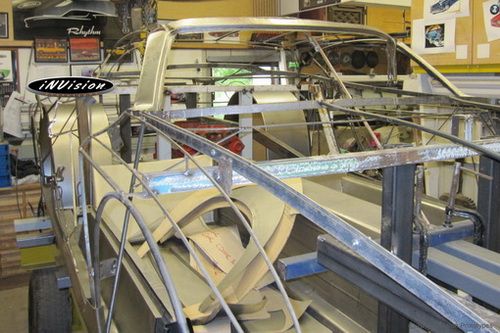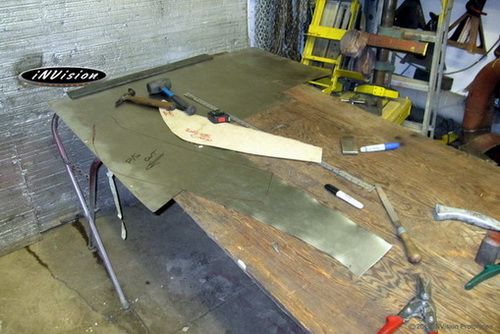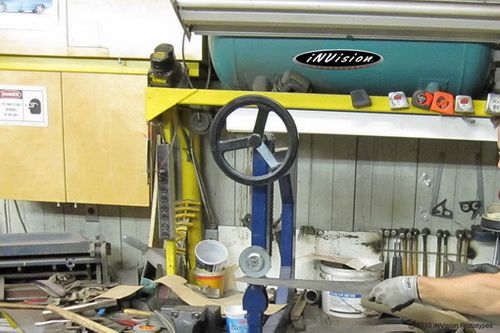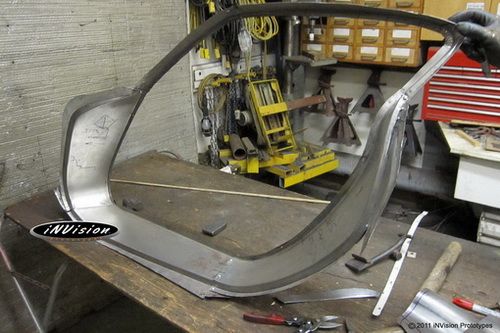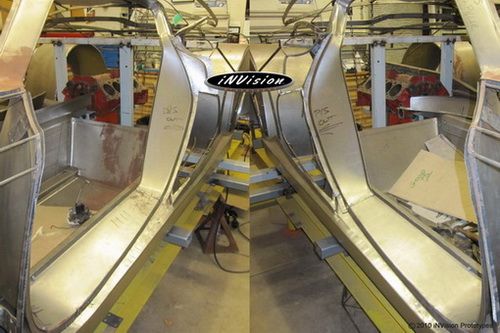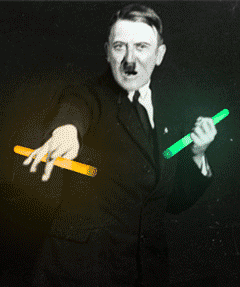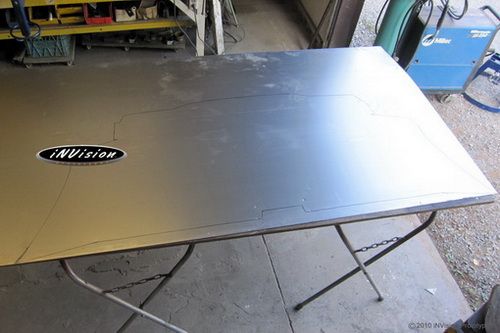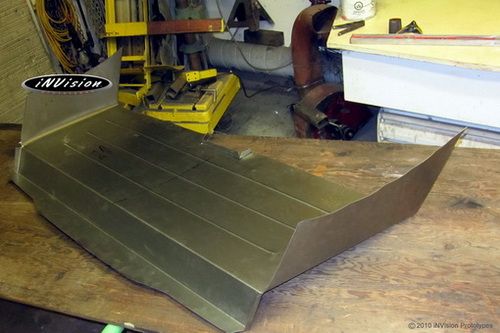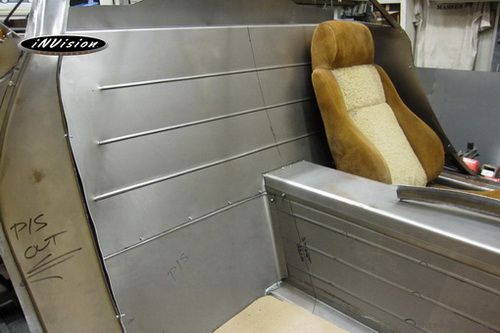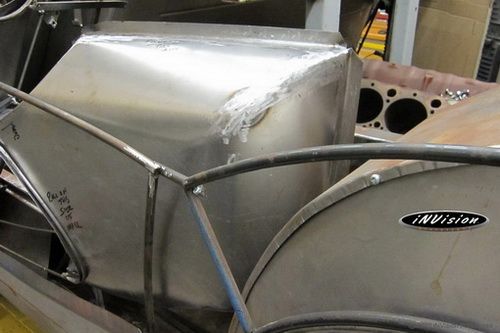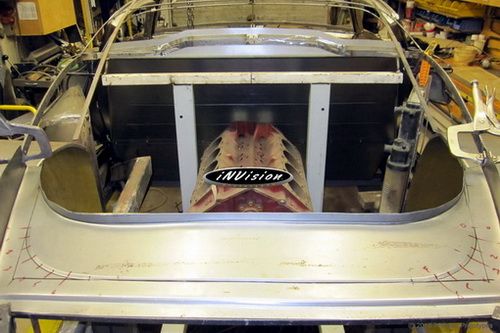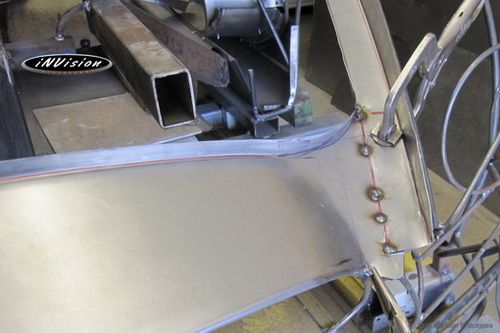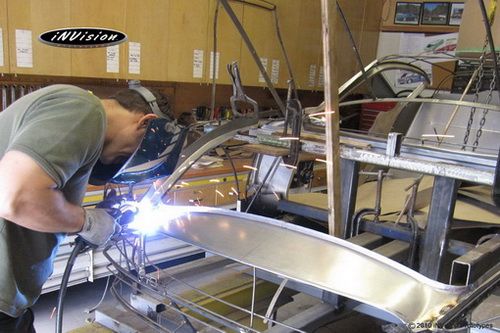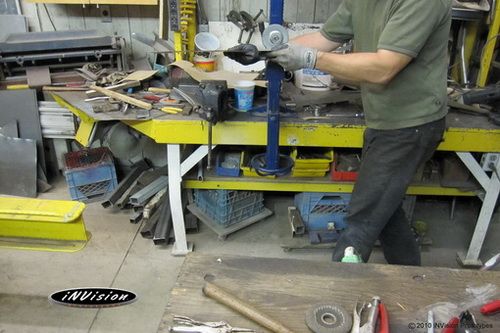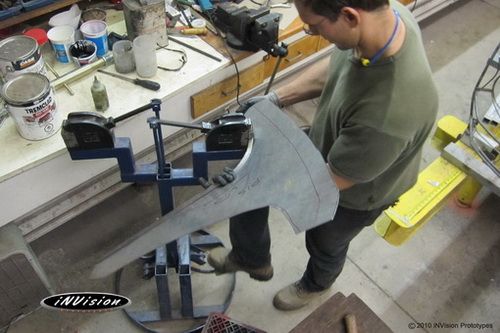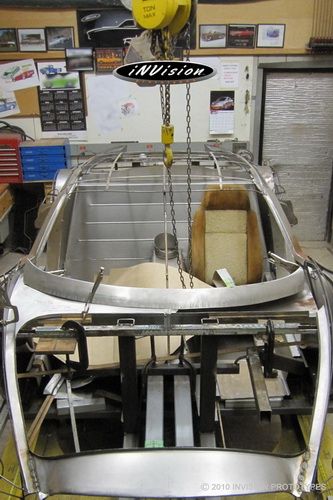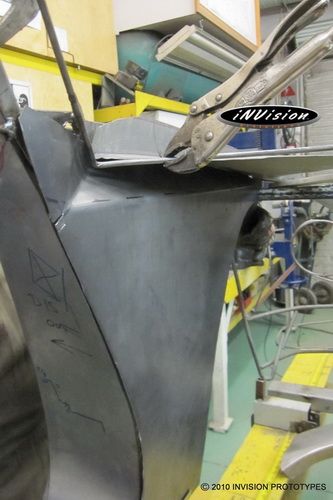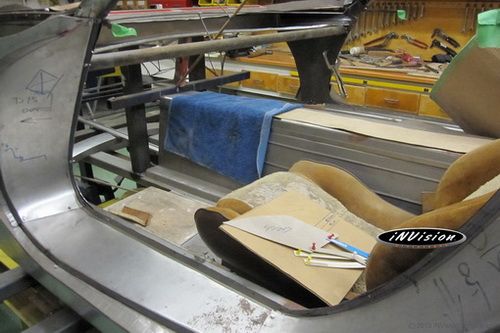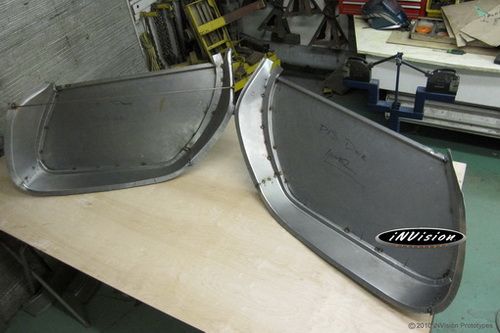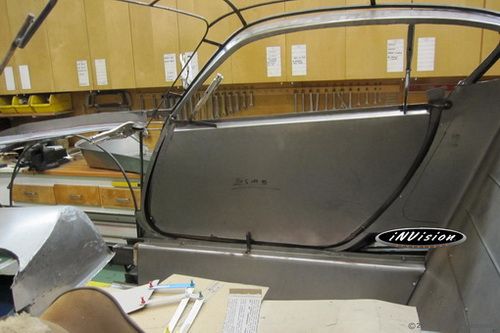I really appreciate everyone's enthusiasm for Rhythm's fabrication thread. That really shows the passion you guys have for not only your projects underway in your garages but as well as other members' rides. Thanks very much.
This is an all new thread that I'm starting so as to share the progress for 'the next one' - our second hand-crafted mid-engine sports car. Like Rhythm's build, it's something that both my dad and I are involved with...I wouldn't have it any other way.
The Idea
Rhythm was in the final stages of assembly and as crazy as it sounds in the back of my mind I found myself already tossing around the idea of creating a second mid-engine vehicle. However, taking into account what had been learned over the course of the building Rhythm, I decided that if and when this new project began, fabrication would have to be approached from an entirely different perspective.
You may have previously seen that Rhythm’s body was essentially hammered and dollied out entirely by hand. While this sounds impressive and taught me how sheet metal behaves, it was immensely time consuming – not something I wanted to repeat. So an English wheel would have to be bought or built to help in creating the panels. I decided to build one. Also, with 'the next one', a fixture would have to be developed to not only provide a base for shaping the body panels, but to also ensure higher fabrication tolerances. For the non-metal shapers out there these fixtures are usually referred to as bucks and can be created many ways including carving a full-scale shape out of foam or building a wooden buck. To meet our requirements we decided to create a wire frame buck. This buck would provide the flexibility to alter particular aspects of the design features relatively easily if it was ever necessary. To ensure that the buck was always square and remained true during the sheet metal shaping process an extremely rigid frame table was necessary. I dislike doing things over again, so the frame table was designed and built in such a way that it was fully adjustable in all 3 planes and to not only work for this project but for others as well.
Here are a few photos of the table:
The frame table being assembled. The main longitudinal beams are 15ft long - the cross members with fully adjustable legs/pads are 6ft across.
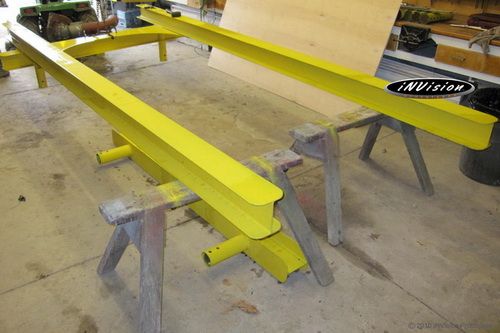
The table is kept square with the use of triangulation gussets which work on a friction system. Once the bolts are tightened...that's it...she's not going anywhere. To move the table around, the rear legs pop out and wheels slip into the pockets.
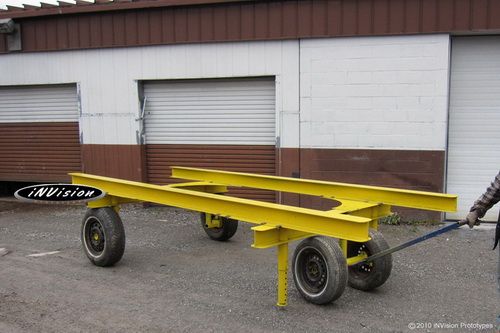
With a comfortable height set, sliding jigs are being created to mount the engine/trans, seats, and suspension components. It took a bit..well actually a lot of work to fabricate the table, but we(my dad and I) wouldn't go back to anything else. And when another project needs to come into the bay the wheels can be installed within a few minutes and the table with what ever is sitting on top is rolled out.
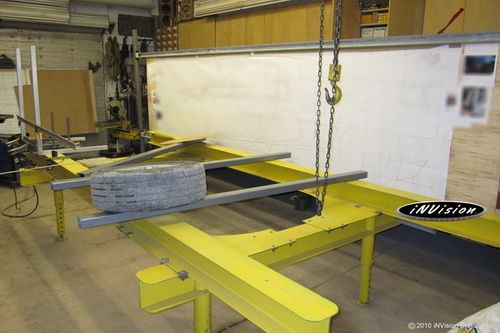
Vehicle Design Overview
Starting out as a fresh sheet of paper design, ‘the next one’ loosely resembles Rhythm. Simply called R2, the lines have been re-proportioned and tightened up resulting in a modern aggressive appearance. Since it’s being built as a driver, we want a final fit and finish that only a metal body can provide. An LS6/LS7 engine mated to a Porsche G50 transmission called for a redesign of the chassis for increased rigidity as well. Rolling on 275/35/R18s in the front & 315/30/R19s rear R2 is 28” shorter, 6” narrower, and a little over 900lbs lighter for a total weight of about 2800lbs. The final horsepower to weight ratio is expected to come in around 6lb/HP.
Here are the specifics:

Creating the Wire Frame Buck
Once R2’s final design was established and renderings completed 2-dimensional construction drawings were created. These were then taken to a print shop and scaled to full size side, top, front & rear views and posted on our shop’s ‘build board’. Then the exciting part began. To create the wire frame buck, the wheelbase, engine/transmission, seating position, and front windscreen locations were set using sliding jigs on the frame table based on design dimensions from a common datum point. Construction of the wire frame buck began by simultaneously working with four drawings and translating reference dimensions from the ‘build board’ into 3D and 'stump shaping' steel rods, square-stock, and flatbar to match the appropriate feature curves.
Initial 20 minute mockup... I grabbed some parts from storage to get an idea of the new proportions. Ahh.. no worries, those won't be the final wheels...
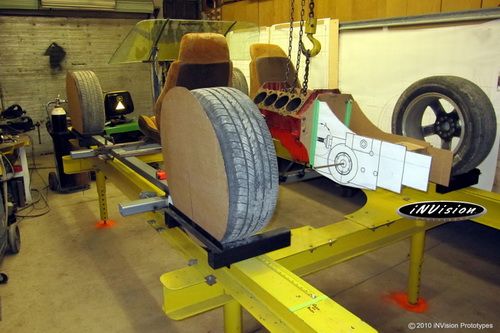
We're into the thick of it with the fabrication of the wire frame buck. The various lengths of box tubing were fabricated to slide along the frame table, then lock into place at set positions. Other lengths were tacked to them.
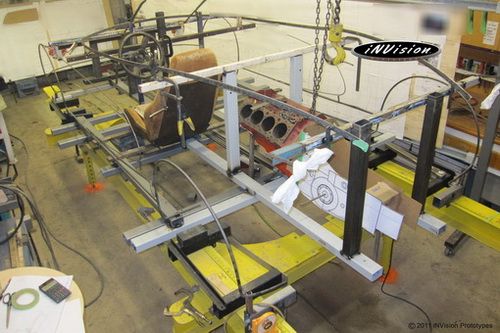
To make room for another job, R2 is rolled out of the bay and covered up. At this point, with most of the wire frame completed, the tarp actually created a temporary surface on the buck and outlined some of the body lines.

Just to clarify, the wire frame is a temporary structure. Once all the inner & outer panels have been created it will be removed and all the panels re-assembled on their own.
This is an all new thread that I'm starting so as to share the progress for 'the next one' - our second hand-crafted mid-engine sports car. Like Rhythm's build, it's something that both my dad and I are involved with...I wouldn't have it any other way.
The Idea
Rhythm was in the final stages of assembly and as crazy as it sounds in the back of my mind I found myself already tossing around the idea of creating a second mid-engine vehicle. However, taking into account what had been learned over the course of the building Rhythm, I decided that if and when this new project began, fabrication would have to be approached from an entirely different perspective.
You may have previously seen that Rhythm’s body was essentially hammered and dollied out entirely by hand. While this sounds impressive and taught me how sheet metal behaves, it was immensely time consuming – not something I wanted to repeat. So an English wheel would have to be bought or built to help in creating the panels. I decided to build one. Also, with 'the next one', a fixture would have to be developed to not only provide a base for shaping the body panels, but to also ensure higher fabrication tolerances. For the non-metal shapers out there these fixtures are usually referred to as bucks and can be created many ways including carving a full-scale shape out of foam or building a wooden buck. To meet our requirements we decided to create a wire frame buck. This buck would provide the flexibility to alter particular aspects of the design features relatively easily if it was ever necessary. To ensure that the buck was always square and remained true during the sheet metal shaping process an extremely rigid frame table was necessary. I dislike doing things over again, so the frame table was designed and built in such a way that it was fully adjustable in all 3 planes and to not only work for this project but for others as well.
Here are a few photos of the table:
The frame table being assembled. The main longitudinal beams are 15ft long - the cross members with fully adjustable legs/pads are 6ft across.

The table is kept square with the use of triangulation gussets which work on a friction system. Once the bolts are tightened...that's it...she's not going anywhere. To move the table around, the rear legs pop out and wheels slip into the pockets.

With a comfortable height set, sliding jigs are being created to mount the engine/trans, seats, and suspension components. It took a bit..well actually a lot of work to fabricate the table, but we(my dad and I) wouldn't go back to anything else. And when another project needs to come into the bay the wheels can be installed within a few minutes and the table with what ever is sitting on top is rolled out.

Vehicle Design Overview
Starting out as a fresh sheet of paper design, ‘the next one’ loosely resembles Rhythm. Simply called R2, the lines have been re-proportioned and tightened up resulting in a modern aggressive appearance. Since it’s being built as a driver, we want a final fit and finish that only a metal body can provide. An LS6/LS7 engine mated to a Porsche G50 transmission called for a redesign of the chassis for increased rigidity as well. Rolling on 275/35/R18s in the front & 315/30/R19s rear R2 is 28” shorter, 6” narrower, and a little over 900lbs lighter for a total weight of about 2800lbs. The final horsepower to weight ratio is expected to come in around 6lb/HP.
Here are the specifics:

Creating the Wire Frame Buck
Once R2’s final design was established and renderings completed 2-dimensional construction drawings were created. These were then taken to a print shop and scaled to full size side, top, front & rear views and posted on our shop’s ‘build board’. Then the exciting part began. To create the wire frame buck, the wheelbase, engine/transmission, seating position, and front windscreen locations were set using sliding jigs on the frame table based on design dimensions from a common datum point. Construction of the wire frame buck began by simultaneously working with four drawings and translating reference dimensions from the ‘build board’ into 3D and 'stump shaping' steel rods, square-stock, and flatbar to match the appropriate feature curves.
Initial 20 minute mockup... I grabbed some parts from storage to get an idea of the new proportions. Ahh.. no worries, those won't be the final wheels...

We're into the thick of it with the fabrication of the wire frame buck. The various lengths of box tubing were fabricated to slide along the frame table, then lock into place at set positions. Other lengths were tacked to them.

To make room for another job, R2 is rolled out of the bay and covered up. At this point, with most of the wire frame completed, the tarp actually created a temporary surface on the buck and outlined some of the body lines.

Just to clarify, the wire frame is a temporary structure. Once all the inner & outer panels have been created it will be removed and all the panels re-assembled on their own.





